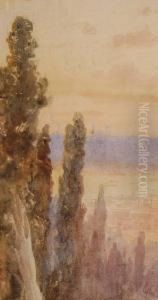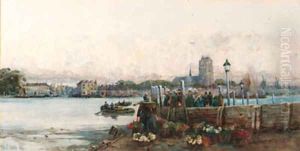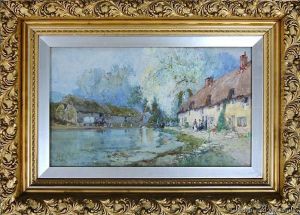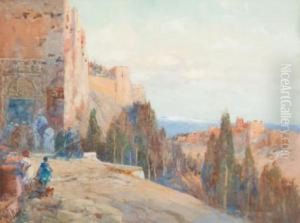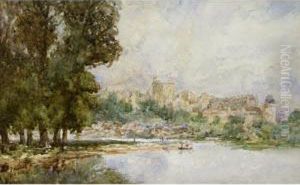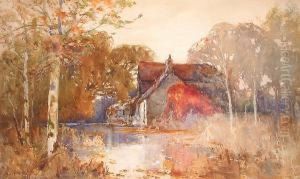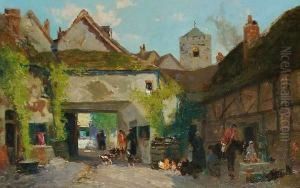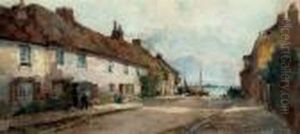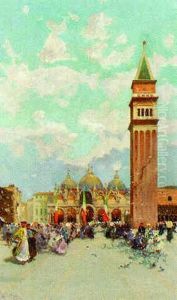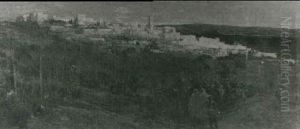George Charles Haite Paintings
George Charles Haité was an English designer, illustrator, and artist known for his contributions to the decorative arts and illustration during the late 19th and early 20th centuries. Born on August 4, 1855, in London, Haité emerged from a background that was steeped in the arts; his father was also an artist.
Haité’s career spanned various disciplines, and he became well-regarded in the fields of wallpaper and textile design, as well as book illustration and landscape painting. His versatility was a testament to his broad skill set and his ability to adapt to different media with ease. As a designer, he was associated with the Arts and Crafts Movement, which sought to revive traditional craftsmanship and improve design during the industrial age.
One of Haité's most notable contributions was his role as a founder member and the first president of the London Sketch Club, which was established in 1898. The club became a hub for professional illustrators and provided a supportive environment for the exchange of ideas and the promotion of illustration as an art form.
Haité was also recognized for his work as the art editor of 'The Studio' magazine, an influential publication that covered the fine and decorative arts. His role allowed him to shape public taste and bring attention to new trends and artists within the burgeoning Art Nouveau movement.
As a painter, George Haité specialized in landscapes and was known for his picturesque scenes that often featured rural England. His paintings were exhibited at various esteemed institutions, including the Royal Academy of Arts.
Despite his success in multiple areas of the arts, Haité remained dedicated to the idea of art as a holistic and integrated practice, where design and aesthetics played a crucial role in everyday life. His contributions to art and design were not just limited to his own work; he influenced a generation of artists and designers through his advocacy and leadership within artistic communities.
George Charles Haité passed away on December 18, 1924, leaving behind a legacy characterized by his commitment to artistry, craftsmanship, and design. His work continues to be appreciated by those interested in the Arts and Crafts Movement and the evolution of illustration and design in the late Victorian and Edwardian eras.


